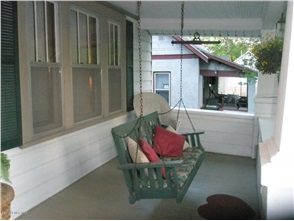What Makes a Street Friendly
A few weekends ago I held a garage sale to cut down on the amount of stuff I have to move to my new house. After living on my street for the last year and a half, I have spoken to five neighbors total. The only neighbors I got to know live next door to me or across the street. I have seen a few others, picked up on their daily habits, but I could not tell you their names. The day of my garage sale I talked to more neighbors than I had the entire length of my residence.
“1/3 of Americans do not know any of their neighbors by name”
As I began to think about why the garage sale brought so many neighbors about I realized it had more do to with where I was sitting, rather than the actual sale I was having (most did not purchase anything, but just stopped to chat about the local gossip). I was sitting in my front yard for longer than a few minutes, providing the opportunity for neighbors and passerby's to stop and talk. Back before everyone began enclosing their front porches for more inhabitable space, people used to sit on their porches, observing the activity in the neighborhood and engaging with people.
Front of my current house, looking at the now enclosed front porch
At some point in time, my porch was enclosed, taking away my ability to engage in this type of activity. When I was living in Rochester, Minnesota my house had a full length covered porch. I built a porch swing which my husband and I sat on routinely, watching as neighbors passed by and talking with our friends next door when they were out on their own porch. The houses in Rochester were closer to the street, making it easier to engage with people and providing a more welcoming feeling. We became good friends with one neighbor, attended a backyard barbecue at another neighbors house, and engaged in casual conversation with a handful of other neighbors. While I like my current neighborhood, it does not have the same engaging environment as the Rochester did.
My full length open porch in Rochester, Minnesota
Planners have everything to do with creating these kinds of welcoming and supportive neighborhoods. At some point in history, we decided it would be a good idea to create large setback requirements, which pushed the houses back from the street 25 to 30 feet. We also added side setback and minimum lot size requirements, separating houses from each other by a sizable amount. Architects helped remove the old neighborhood style by designing homes without front porches. A small covering allowed enough room to stand and wait for the door to be opened, but there really was not space to gather or sit.
Large lot subdivision filled with porch-less houses (photo courtesy of strongtowns.org)
A study done in 2010 showed only 43% of American's know their neighbors by name, while almost one-third did not know anyone by name. We need to reverse the trend of spending our time in the backyard or inside our houses. We need to return to the old form of neighborhoods, when front yards were smaller, houses had open front porches, and neighbors had the opportunity to talk with one another. Creating these neighborhoods will in turn create strong communities that increase safety, strengthen support networks, and lead to more inclusive neighborhoods.









